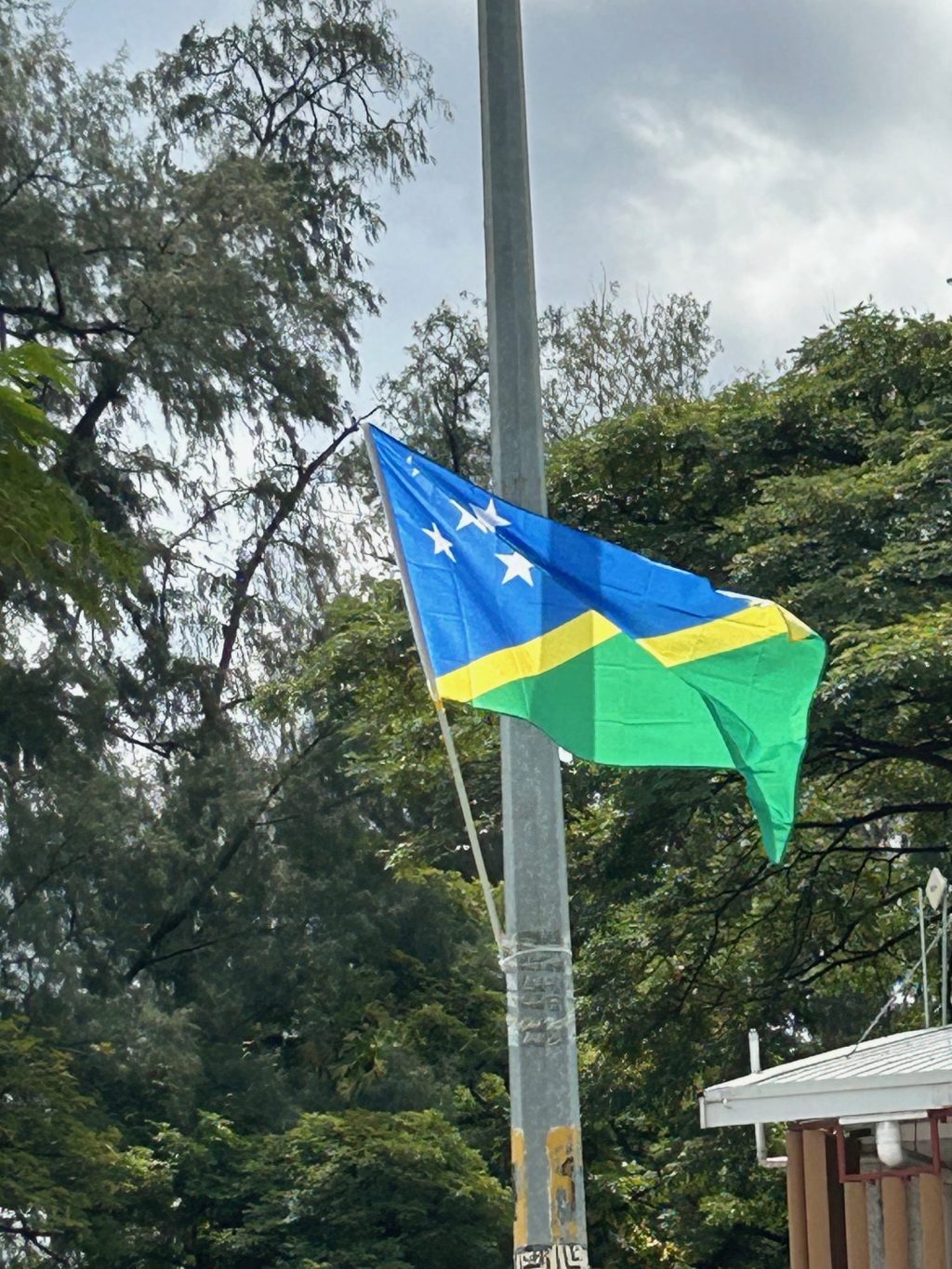Honiara is the capital of the Solomon Islands and situated on its biggest island, Guadalcanal, site of fierce fighting between the Americans and the Japanese during World War II.
Solomon Islands is one of the poorest countries in the Pacific so there’s not a lot to tempt the tourist. Not unless you’re on some kind of diving/snorkelling or fishing package. And it’s hot! Perhaps not quite as bad as Darwin at its worst, but I went walking the streets yesterday afternoon and constantly mopped my face till the thick tissue was almost sopping wet.
I was only going to stay for one night. Then Solomon Airlines cancelled a crucial flight, which left me the option of a two-hour stopover at Honiara airport or extending my stay for three nights. So I swapped out one night at the plush Coral Sea Resort for three nights at the cheaper King Solomon Hotel, in the process forfeiting two our of four night’s prepaid unrefundable accommodation at the Port Moresby Hilton. But it was either that or miss out on the Solomons altogether, as an airport stopover doesn’t count as visiting a country. Even as the ultimate dilettante traveller I have my standards.

As so often happens when you’re travelling, the roughest, poorest, least tourist-friendly destination turned out to be the most interesting and memorable.
I soon discovered why the King Solomon Hotel was so much cheaper. The rooms were grimy and grotty, with rust and mould in the bathroom, and little piles of black debris on the floor from some boring insect. The wall-mounted air-conditioner emitted a high-pitched whine over the usual hum. There was a leaking hose outside my room and I had to step over the resultant puddle to get in. The safe didn’t work (I did ask) and the front desk had to send someone up to make the TV work. They sent up an unkempt barefoot bloke in raggy shorts and singlet who looked like the Wild Man From Borneo but was sufficiently tech-savvy to figure out that the TV needed a complete re-tune and he did it, just using the remote.
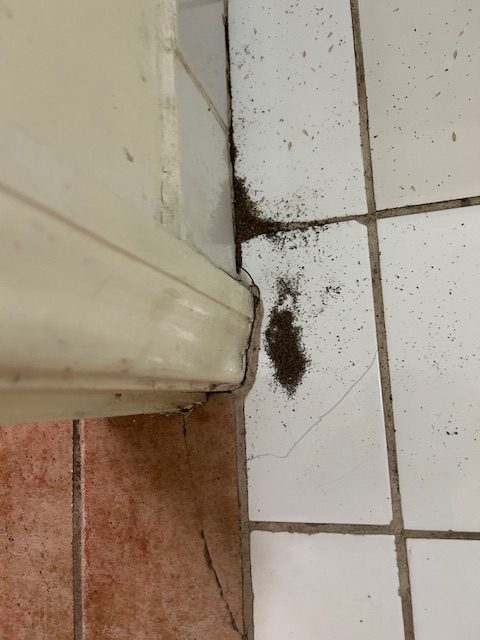
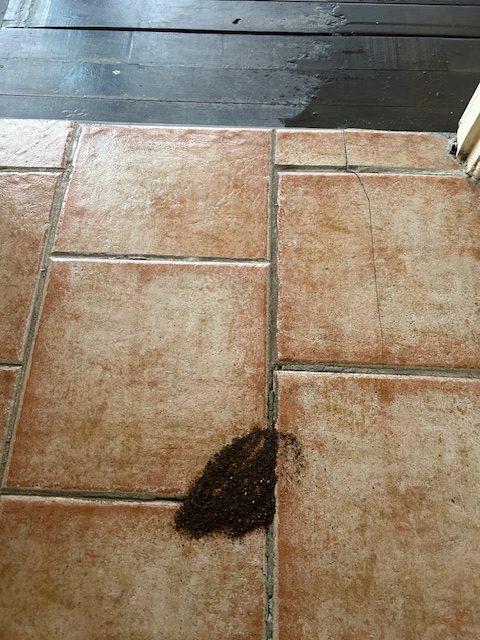

Someone came up to sweep away the mess on the floor, but when this reappeared on the second day in the same quantities, they moved me to the room next door, which didn’t have the borers, the puddle or the added air-con whine.
[The next few pars were written at the time, over July 7, 8 and 9.)
On the plus side, I just love the tropical ambience and layout. The rooms are set on several levels rising from the pandanus-thatched ground floor and there is this funky little funicular cable car to take you up to your room.


Naturally I used it when I arrived with luggage. I would normally otherwise use the stairs for the exercise, but in this climate? It could use a good clean and a lick of paint but it’s such fun. I do walk DOWN the stairs …. mostly.
Also on the plus side, the natural pool. Pic on the right shows the view from the balcony (through which a coconut tree grows) outside my room.
When I say ‘natural’ I mean there’s no chlorine detectable and it’s definitely not salt. It’s probably very limey, judging by the hard deposits on the big rocks lining it. I had feared it might be tepid, as water in the tropics so often is, but it’s delightfully cool and fresh, and deep. I’ve had two blissful dips already, and did a respectable session of aquarobics today. Now I’m sitting at my laptop in my damp bathers with my damp hair and am still cool enough not to have to turn on the noisy airconditioner.
It’ll be a different story tonight, when there promises to be an Independence Day party in the lobby. It’ll be a toss-up between heat and noise, like last night when I opted for the noise of the aircon, with ameliorating earplugs, which only just kept me cool enough, even with the fan on. But it had the added benefit of drowning out the beats from the bar/restaurant and a noisy kid next door, both of which finished mercifully early, it must be said.
Although they ran out of fish for chowder last night and self-raising flour for pancakes this morning, and the wood-fired pizza oven didn’t deliver the goods, and the beds are hard, it does have the redeeming virtue (in my eyes) of having a great history, outlined in a plaque in the tropical-timbered, fan-cooled lobby. In the sixties, a rich American happened to be at the reception desk of a then posh hotel, and was shocked when a doctor from Vanuatu was refused accommodation because of his dark skin. The American then and there embarked on the project of building the King Solomon, vowing it would be open to all regardless of race or creed etcetera.



My new friend Jeff knows the family, whose descendants are still busy in the life and economy of the Solomons. Jeff and I got talking at breakfast this morning, each curious as to why this other solitary European was in Honiara. Turns out Jeff, a refugee from BHP’s poor environmental practices in PNG, volunteered here during the late 70s after the Solomons gained independence from Britain. He was working with young unemployed boys, organising a rudimentary education for them so they could join an economy moving away from subsistence farming. He’d come back to the Solomons to see how things had progressed over the decades.
Not well, it seems. Honiara was a paradise back then, he reckons: pristine waters, unspoiled tropical landscapes. But now….too many trees cut down, the Chinese moved in and built ugly streetfronts and concentrated on making money. I asked the taxi driver coming in from the airport why none of these buildings had glass at street level. It seems when there is unrest the locals will break all the windows and generally trash the place. The Chinese, who own 98% of the commercial enterprises, bear the brunt of it. In one round of rioting, there was bloodshed.
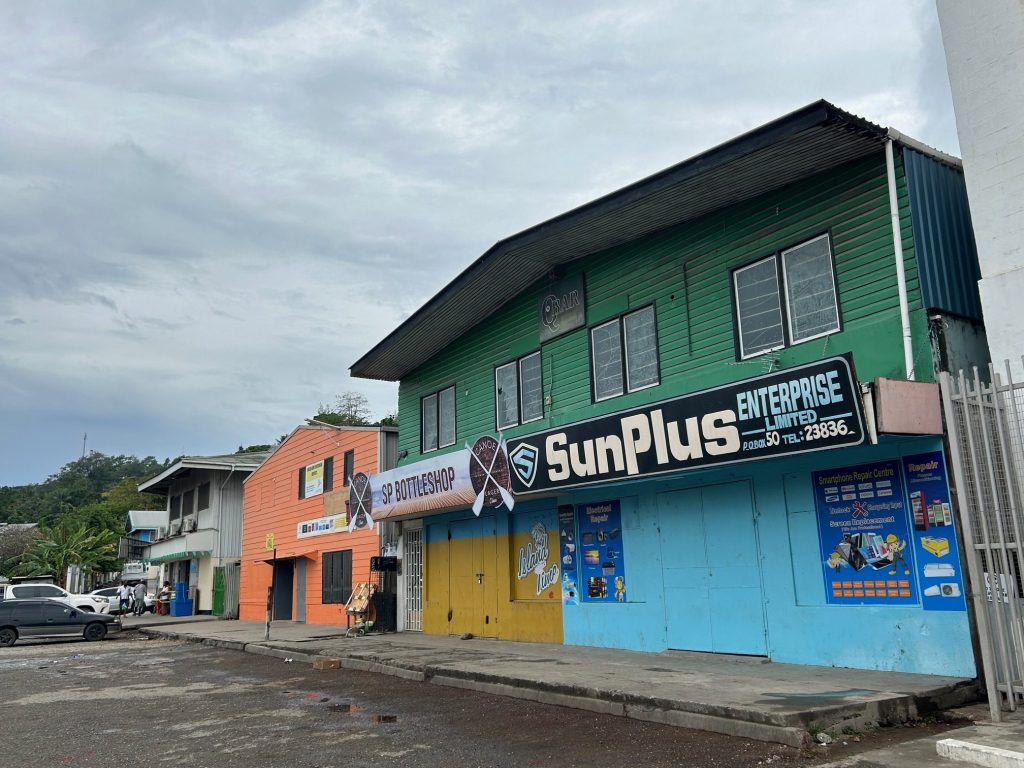


When I arrived it was their Independence Day. There was supposed to be a big rally at the sports stadium (built with Australian money, I heard) and also a ceremony down at Port Cruz, but one of the locals told me there’s not much nationalist fervour because there’s not a strong national identity, thanks to ongoing tribal and cultural differences. The Malaitan people, for instance, whose grievances sparked the unrest that led to the RAMSI mission, are quite different to the people of the southern islands. They are darker-skinned, and said to be more energetic and entrepreneurial.
The Islands are also not exclusively Melanesian. Jeff and I met a young government adviser who said he was from a Polynesian community that had been in the Solomons for generations. He was a very impressive young(ish) man, and had interesting things to say about the recent elections, in which the pro-Chinese Manasseh Sogavare was voted out. Was the new Prime Minister, Sogavare’s former foreign minister Jeremiah Manele – not going to kowtow to Xi Jin Ping like his predecessor did? He said it was hard to tell. We heard this from other locals too. The ABC says he’s going to keep ties with China but be less confrontational with Australia.
I did ascertain that the locals are very fond of us. While out and about on my own I was often asked where I was from, which was a bit curious since pretty well every European person who wasn’t a local was an Aussie. When I told them ‘Australia’ they would smile and nod approvingly, often through betel-nut stained teeth. Talking to one family group I remembered seeing two uniformed Australian soldiers at the airport, and presumed they were with the RAMSI peacekeeping mission. RAMSI? Australian soldiers? Good? Yes, yes, yes!
RAMSI: the Regional Assistance Mission to the Solomon Islands, also known as ‘Operation Helpem Fren’. It started in 2003 in response to a request from the Governor-General of the Solomons for international assistance in controlling tribal and ethnic unrest which had led to violence (see above re damage to Chinese enterprises) and some killings. Australia and New Zealand led the peacekeeping force, which included police officers from all over the Pacific including Fiji, PNG, Samoa, Tonga, the Marshall Islands …15 countries in all. Over the course of the mission from 2003 to 2017, three Australian personnel were killed, but it was otherwise a roaring success. There are still Australian ADF, Federal Police and diplomatic staff in the Solomons alongside those Pacific partners. There was a little RAMSI museum just over the road from the King Solomon. I spent a few hours there absorbed in the history.
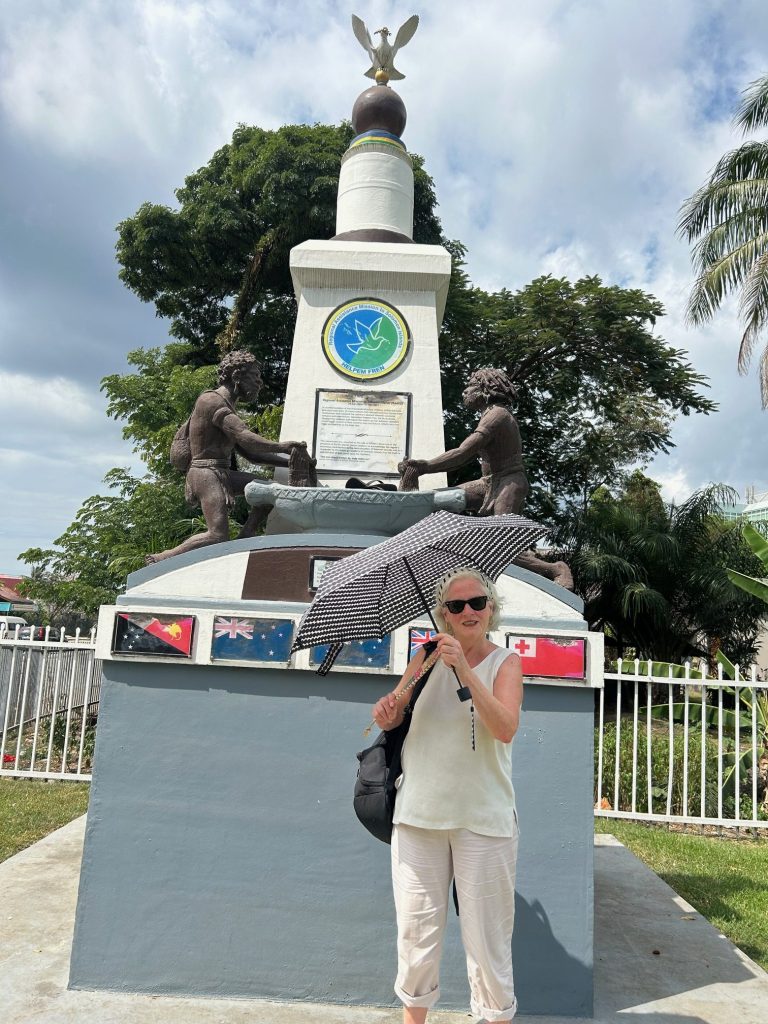
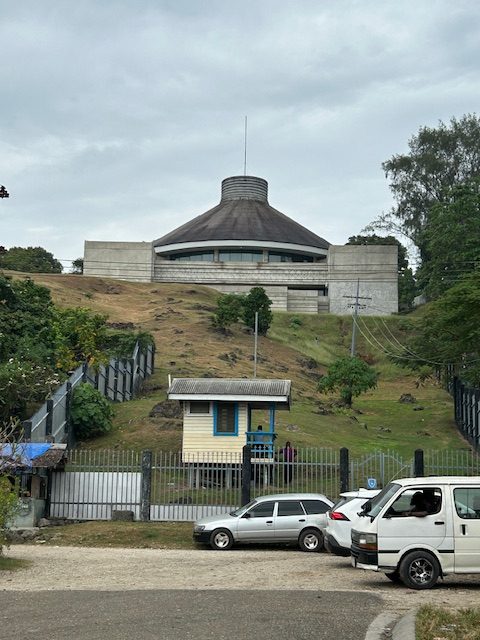
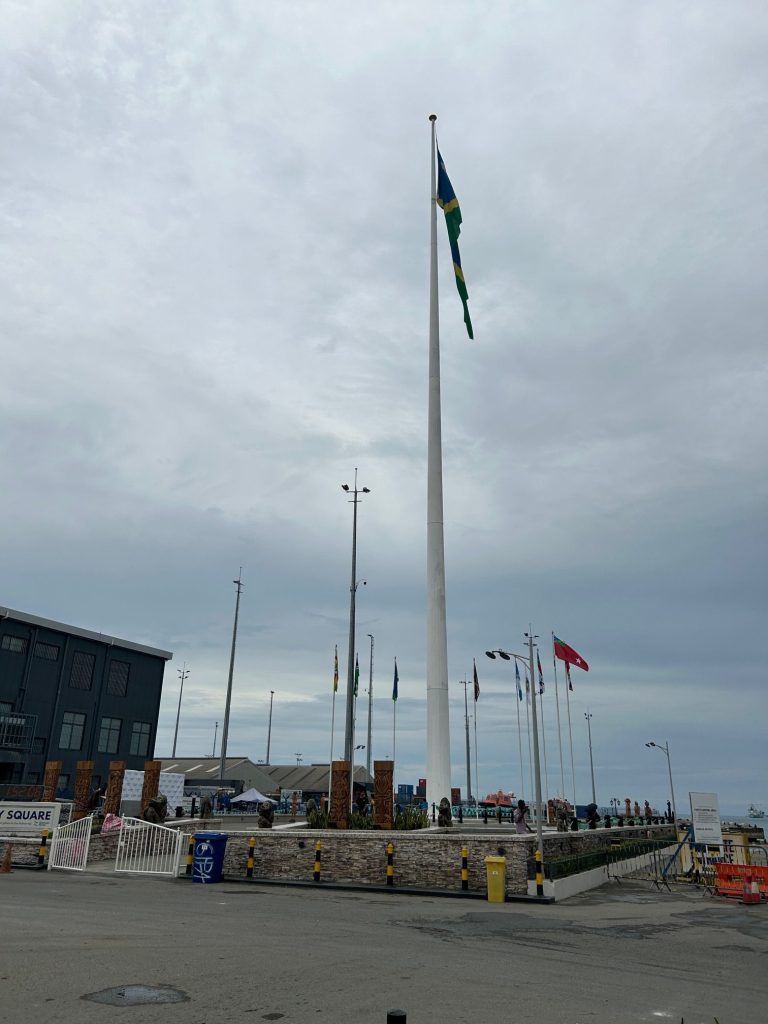
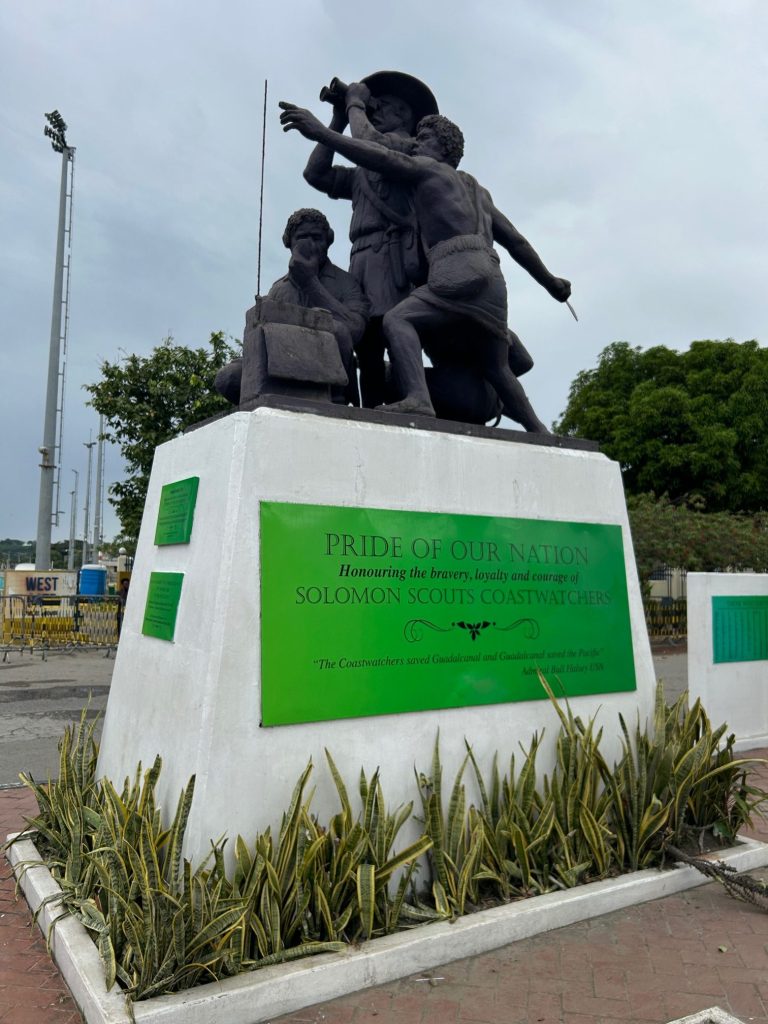

I went out walking on my first afternoon in Honiara. (Notice the differences in skin colour between these two ladies at the Cathedral. The darker one could well be from Malaita.)
That same day I enquired about the one tour that was advertised at the front desk. It was some mob called IUMI. The desk rang them for me and I was quoted the equivalent of $A280 for all the WWII sites and everything else worth seeing in Honiara. I knew this was WAY over the odds – the 30-minute taxi from the airport only cost about $2. I googled the itinerary and ascertained that I had actually come across each of the listed sights just out on my walk! The only thing I hadn’t managed to see was the National Museum (which was just across the road but was closed anyway) and the American War Memorial on Skyline Ridge. Jeff and I found a driver to take us up there the next day for roughly $A10.

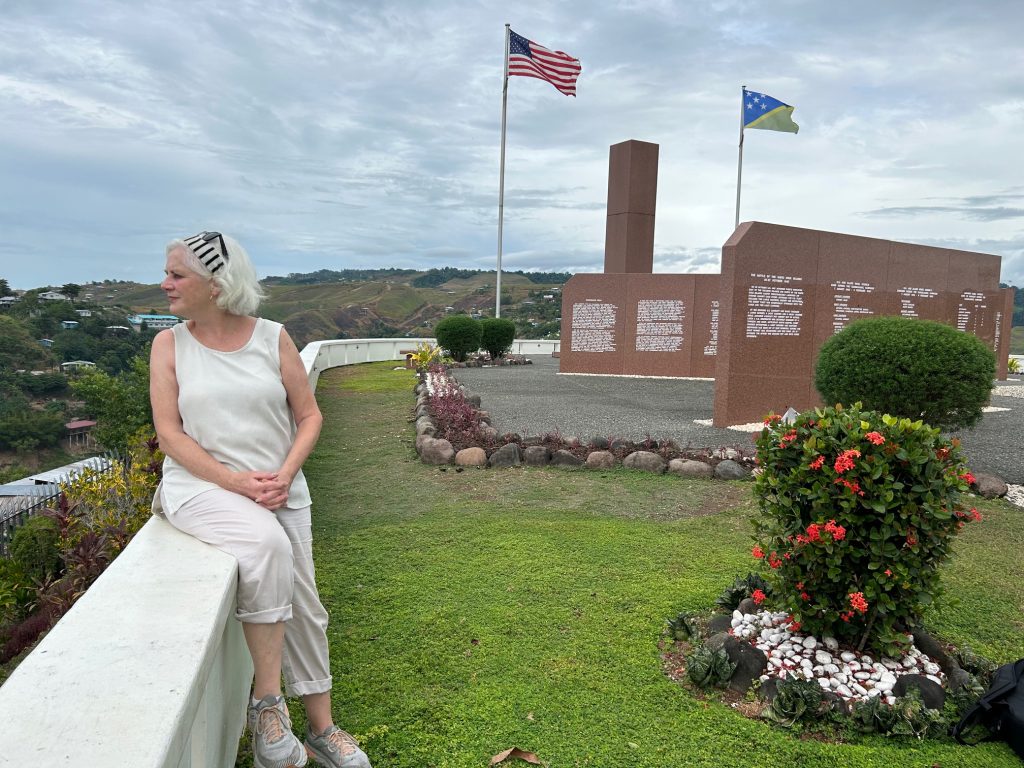
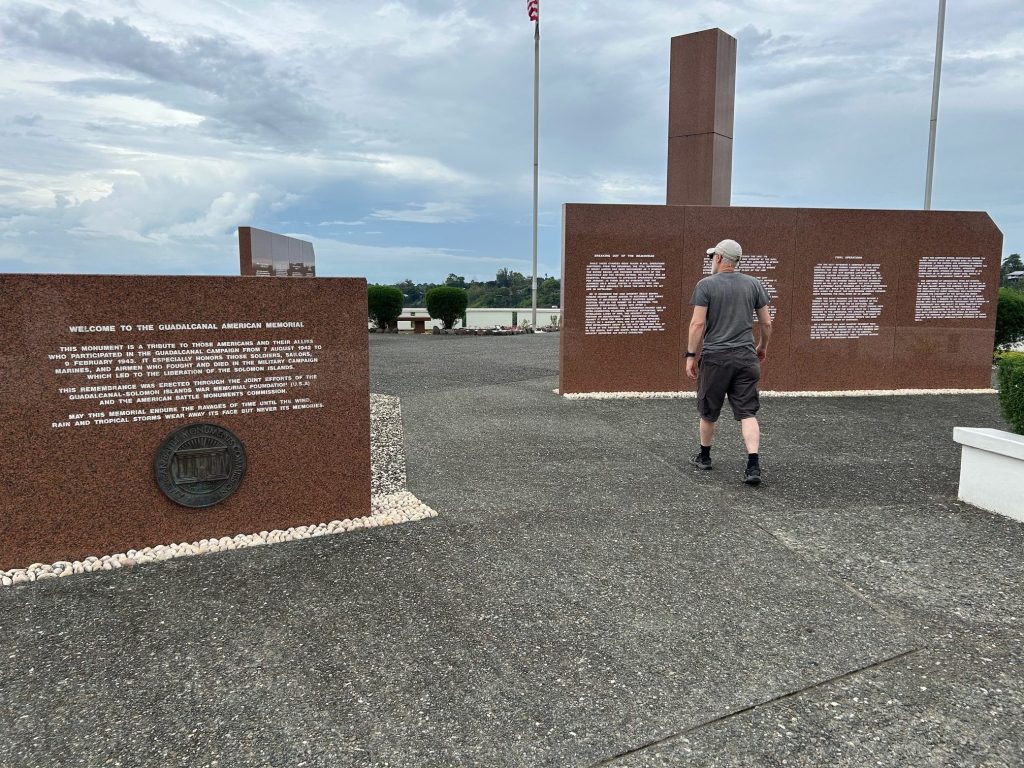
This site was immaculately preserved and very moving and you got a view over the hinterland which made a welcome contrast to the grottiness and disorder of Honiara.
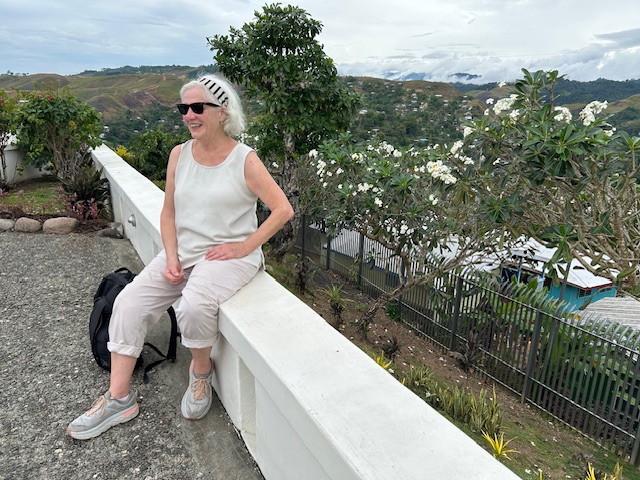
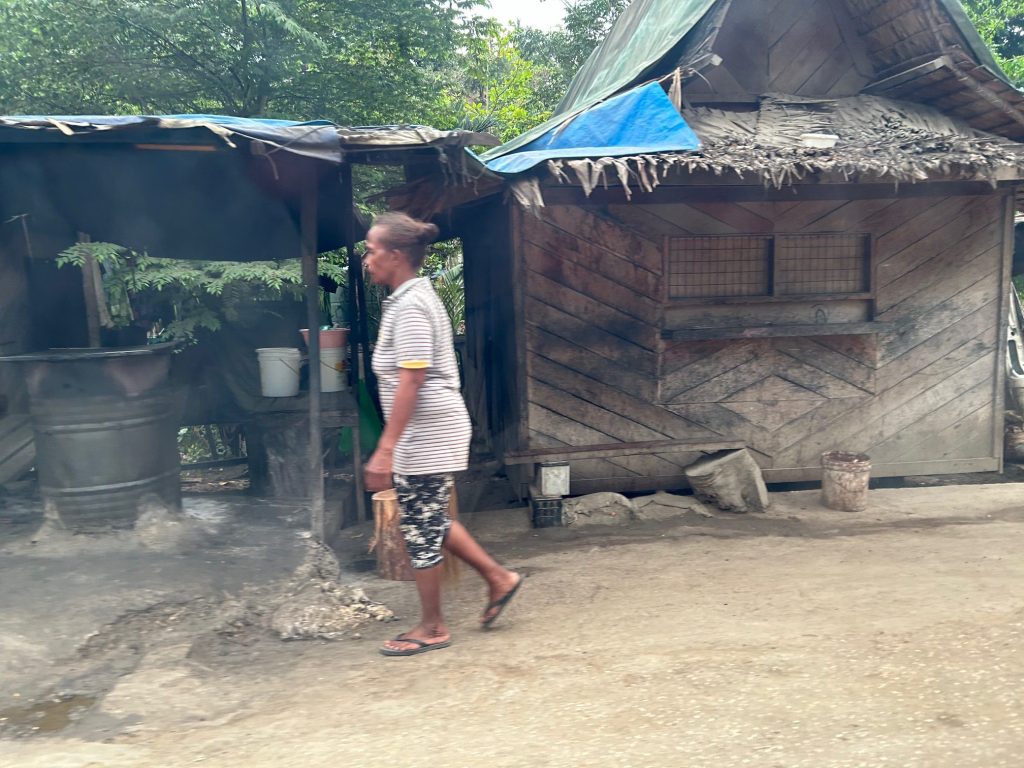
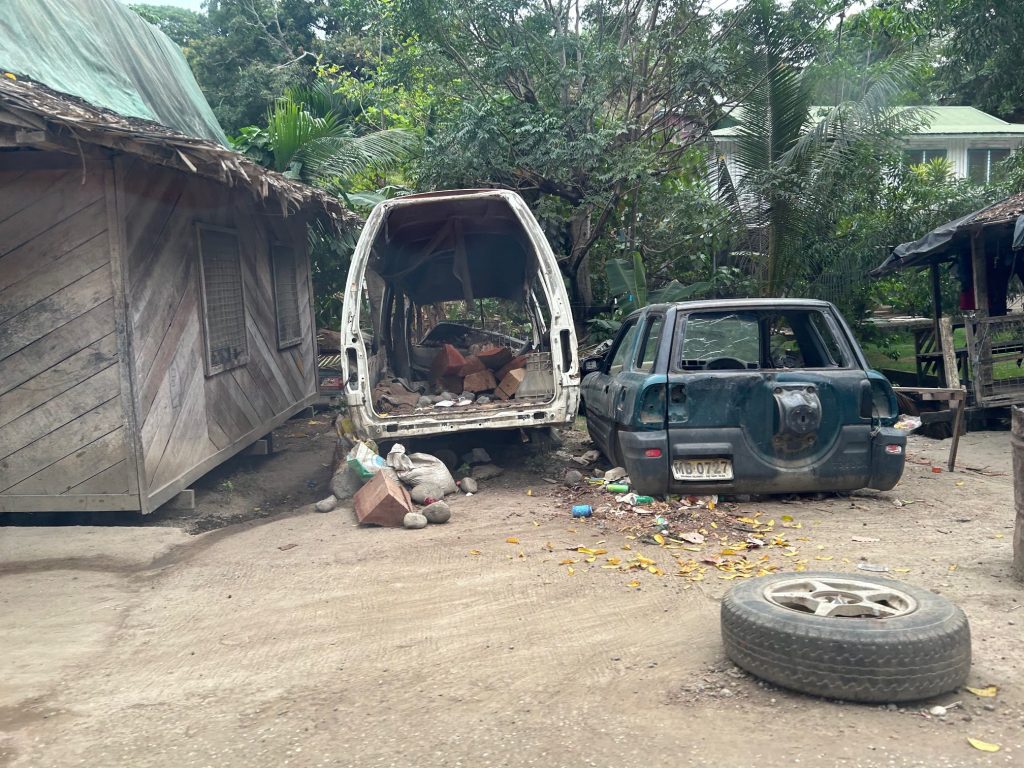
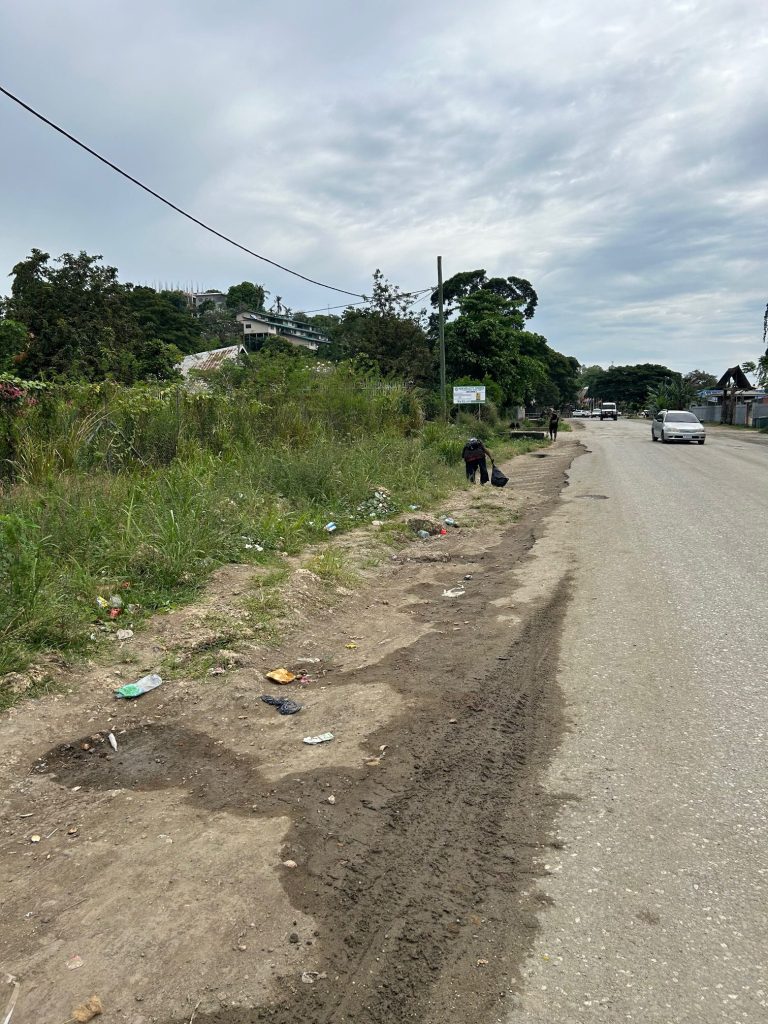
Despite the signs everywhere urging people not to drop ‘rabis’ (rubbish), there was plenty of it, such as here on the main road (hotel in the distance). This man was picking up cans, but not the abundant plastic rubbish. There is a ban on small water bottles, but you see plenty of bigger ones among the litter.
Speaking of signs…
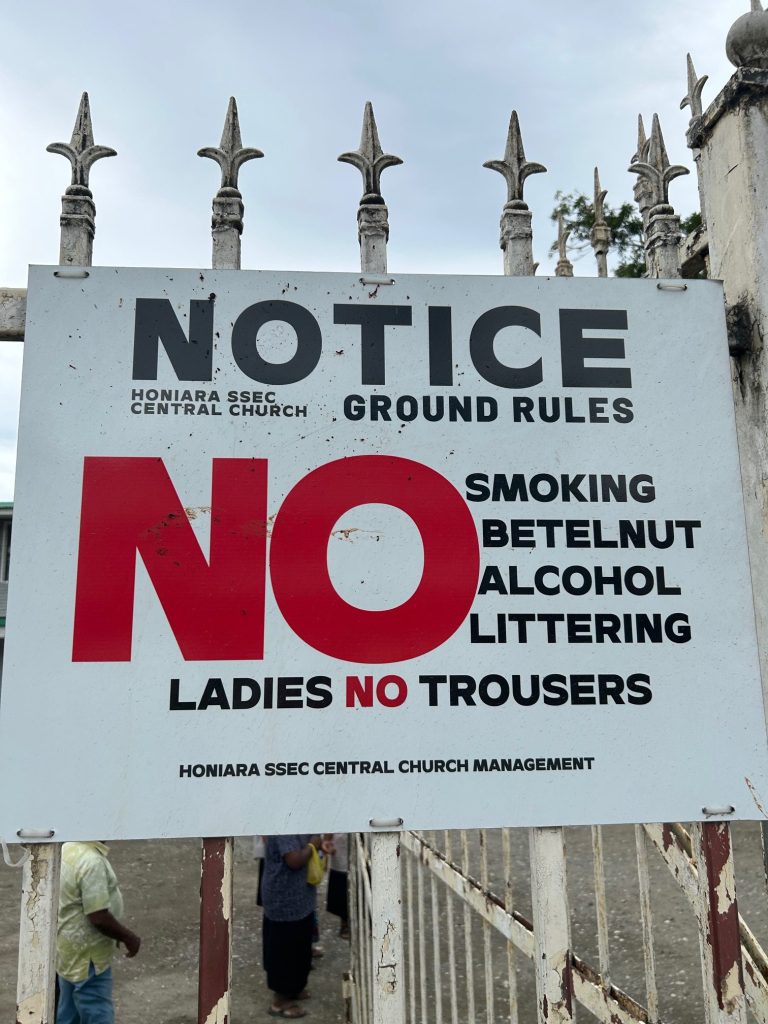
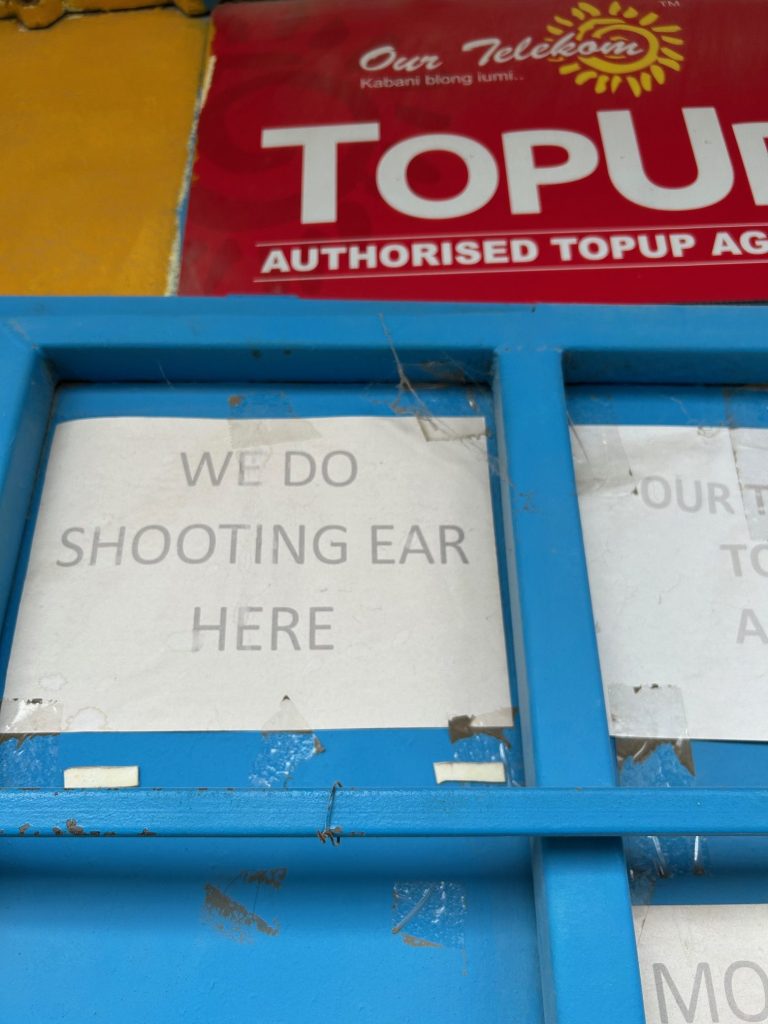

It was very hot and humid so I was wearing shorts. Nobody seemed to mind that I was breaking the rules.

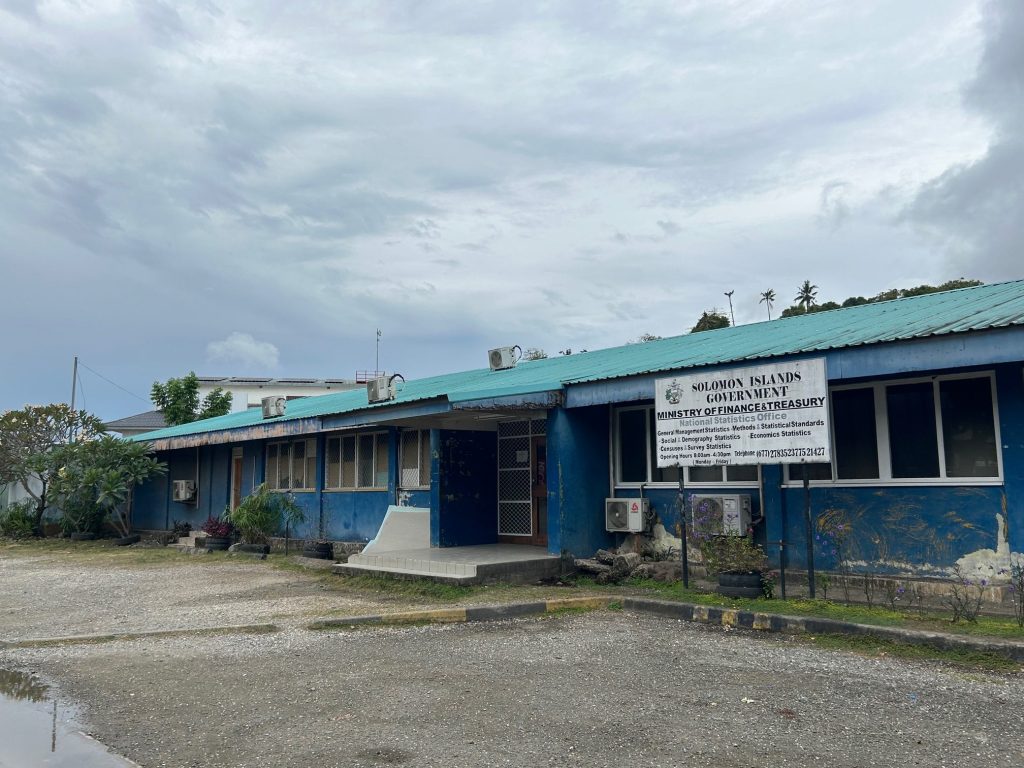
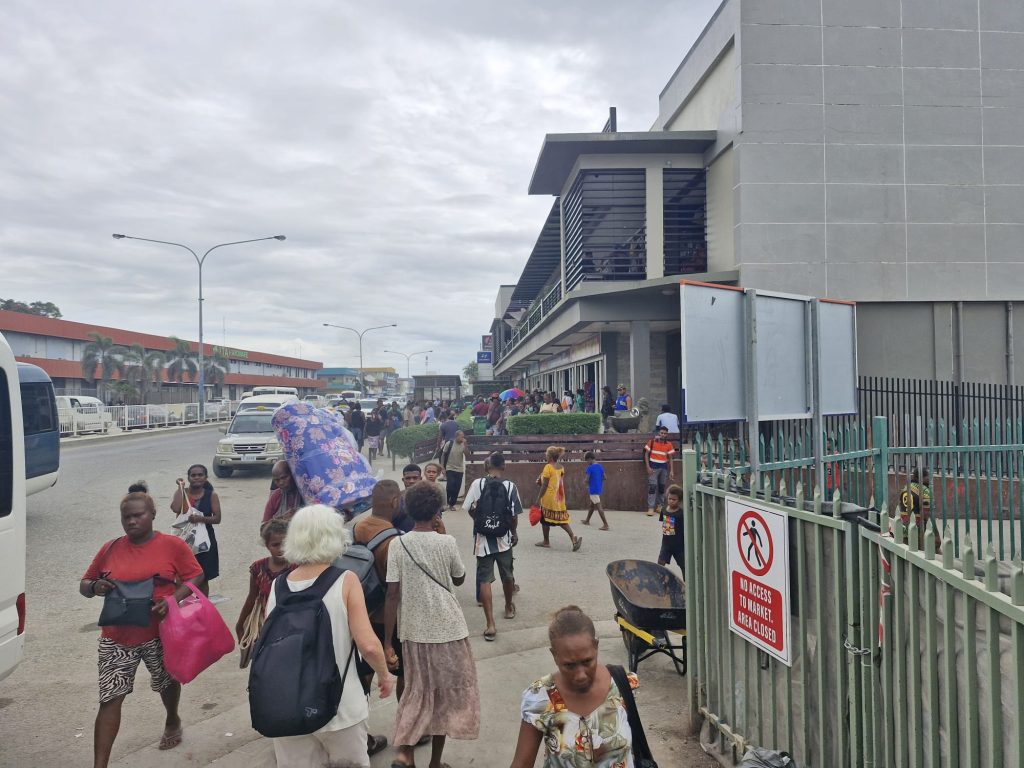
I did love the cassava chips to be had at the market. And while the food at the King Solomon was so-so, there was lots of good fresh fruit.

